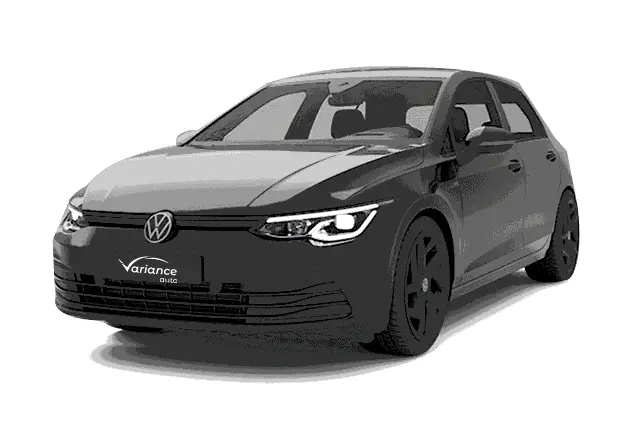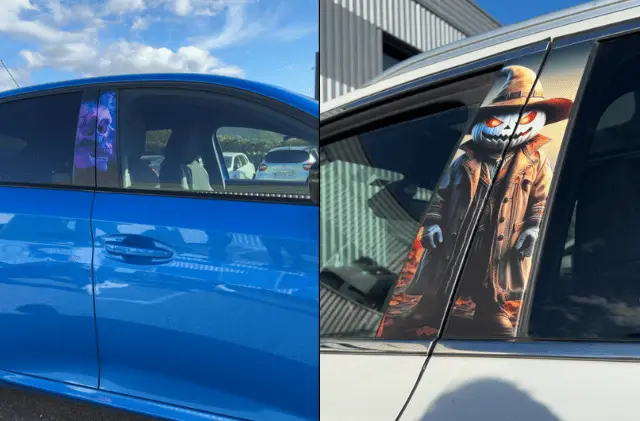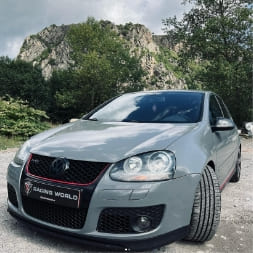
Le 09/09/2024
written by Laura P
How do you look after your car when you return from vacation?
Back from vacation: take care of your car
It's back to school time again, and you feel like pampering your car? You've come to the right place! Wrapping In this article, we'll show you how to take good care of your car.

The film wrapping
A wrapping film is an adhesive coating that is applied to your car's bodywork. It comes in a variety of colors and finishes. It can be matte, gloss, glitter, carbon, satin or brushed. There's bound to be a wrapping film to suit you and your desires.
The benefits of film wrapping
Film wrapping is an excellent alternative to paint. There are many advantages to choosing wrapping rather than paint for your vehicle. Here are some of the main ones:
- Reversibility: This is undoubtedly the major advantage of wrapping. Unlike paint, the application of a wrapping film is not definitive. You can easily change it as often as you like, without risk of damaging your vehicle's original bodywork;
- Cost: Another significant advantage is cost. Painting can be expensive, especially if you're on a tight budget. The wrapping, on the other hand, is a more economical solution that allows you to give your car a new look at a lower cost;
- Customization: At Variance Autowe offer a wide range of colors for your wrapping. Whether you prefer black, blue, gray, or even more original shades, there's something for everyone. It's up to you to choose the color and finish that suits you best;
- Protection: By applying a film of wrapping to your bodywork, you offer your vehicle extra protection. In the event of scratches or weather damage, wrapping can minimize the impact of damage;
- Easy to install: wrapping is much quicker than painting a body. With films from Variance Auto, you gain in efficiency. You can apply it yourself, or with the help of a friend or relative, without needing to call in a professional.
Film application wrapping
Installing a film wrapping can be done by a professional or by yourself. A film can be applied to the entire surface of your car, or just a part of it: the hood, mirrors or bumper.
During installation, a few precautions should be taken, such as :
- Position your vehicle in a dust-free area where the temperature is between +15° and +25°;
- Thoroughly clean your vehicle's bodywork.

Tinted glass kit
Tinted window film is an excellent solution for looking after your car. A tinted film can transform the appearance of your car, giving it both elegance and sobriety. Whether you're looking for a sporty style, a luxury finish, or a touch of discretion, tinted films are a versatile solution for achieving the ideal look.
Tinted window film, also known as solar film, has a number of advantages:
- Protection from the heat: If you don't like air conditioning, or your vehicle isn't equipped with it, an effective alternative is to install tinted windows. Thanks to the optimal quality of these solar films, the sun and its heat penetrate less easily into the passenger compartment, keeping the air cooler. By reducing exposure to the sun's rays, you also benefit from better protection for your skin, as UV rays can be harmful, leading to burns, premature skin aging and even diseases such as skin cancer;
- Protection against glass breakage: In addition to protection against heat and UV rays, one of the major advantages of tinted windows is protection against glass breakage. Before attempting to break a window, a potential thief will first take a look inside your vehicle. Depending on what he sees, he'll either decide to break the window to grab whatever he's interested in, or move on. By darkening the interior of your car, tinted windows make the contents less visible, reducing the risk of theft.
Depending on the shade of solar film you choose, the protection against heat will be stronger or weaker. In fact, opting for a darker film will give you better protection. So it's important to choose the right solar film for your needs and desires.
Installing solar film
Anyone can install solar film. At Variance Auto, our solar films are pre-cut and thermoformed. This makes the film more malleable and easier to install.
Just as when installing a wrapping, the same precautions must be taken. Once these precautions have been taken, there are three steps to follow:
- Clean the glass with soapy water and a sponge to remove all impurities. Then, using a clean, dry cloth, wipe the glass;
- Place the film on the glass, having first flooded the film and glass once again with soapy water. Once the film has been applied to the glass on the inside, press from the center outwards to allow the soapy water to escape and avoid bubbles;
- Wrap a clean cloth around your maroufle for the final touches. The aim is to roll one last time, always from the center to the edges, to perfectly remove all water and bubbles.
Discover the installation instructions

The film by Paint protection film
Film from Paint protection film, also known as PPF, is a transparent film that protects your bodywork from impacts and shocks. It also preserves your car's original paintwork. It can be applied to the entire body, or just to a single part: handles, hood, mirrors or bumper.
The application of body protection film offers many advantages. Here are the main ones:
- Preserving paintwork shine: Paint protection film films from Variance Auto combine UV protection with anti-yellowing action. So when you remove the film, your car's paintwork will look as good as new. What's more, it's an excellent alternative to expensive paintwork;
- Weather protection: Rain, snow, wind and other elements can damage your vehicle. By adding a protective film, you create an additional barrier that protects the bodywork and paintwork from these elements;
- Preventing scratches and dents: door knocks, splashes and other impacts can easily damage your car. A film from Paint protection film helps reduce the impact of such damage, by attenuating scratches and bumps;
- Aesthetic modification: At Variance Auto, we offer both transparent and colored protective films. For those wishing to change the appearance of their vehicle, a colored PPF film is an excellent alternative to paint, offering a similar option to wrapping.
The installation of Paint protection film
There's nothing complicated about applying Paint protection film film - quite the opposite, in fact. Just like wrapping and sun protection film, once the surface in question has been thoroughly cleaned, you can start applying Paint protection film film, following the steps below:
- Install the cutting wire on the surface where the film will be applied to delimit its location;
- Remove the protective liner from Paint protection film using two pieces of scotch tape;
- Apply the Paint protection film film, having first soaked it and the surface in question in soapy water;
- Mould from the center to the edges with a trowel to get rid of the water;
- Remove the cutting wire previously installed, marouflaging the wire before gently pulling on it;
- Finish off by trimming superfluous parts with a new-blade cutter.

Film for lighthouses
Transparent or colored, headlamp film is positioned, as the name suggests, on your car's headlights. This film offers many advantages, such as :
- Impact protection: Headlight film forms a barrier against stone chips, scratches and insects. This keeps the aesthetic appearance of your headlights in perfect condition;
- Easy maintenance: Headlight films are easy to clean with non-abrasive products. By protecting the headlights, they also prevent the build-up of hard-to-remove dirt;
- Preserving original aesthetics: Your car's headlights can yellow or fade over time due to UV and weathering. A headlamp film slows this process, helping to maintain their original appearance and ensure optimum clarity for maximum visibility;
- Headlamp customization: You can choose from a range of tinted films and colors to modify the appearance of your headlamps to suit your preferences. This makes your car unique;
- Easy film removal: If you want to change or remove your headlamp film, it's easy to do so without damaging the headlamps. You can adjust or remove the film as required.
Applying headlight film
There are two ways to apply headlamp film: either dry or with soapy water. Depending on the method chosen, the application steps will differ. However, there are a few common steps:
- Thoroughly clean the headlights with soapy water and a sponge to remove any grease. Once cleaned, simply wipe the surface with a clean, dry cloth;
- The finishing touches, once the installation is complete, consist of a final tapping to remove any remaining air bubbles. Then, using a cutter with a new blade, trim off the excess headlamp film.
Installation with soapy water
- Flood the surface to be coated with headlamp film with soapy water;
- Place the lighthouse film on the surface, then press from the center outwards.
Dry laying
- Place the headlamp film on your surface, then reposition it to fit as you wish;
- Heat the film with a heat gun so that it conforms perfectly to the shape of your headlight.









